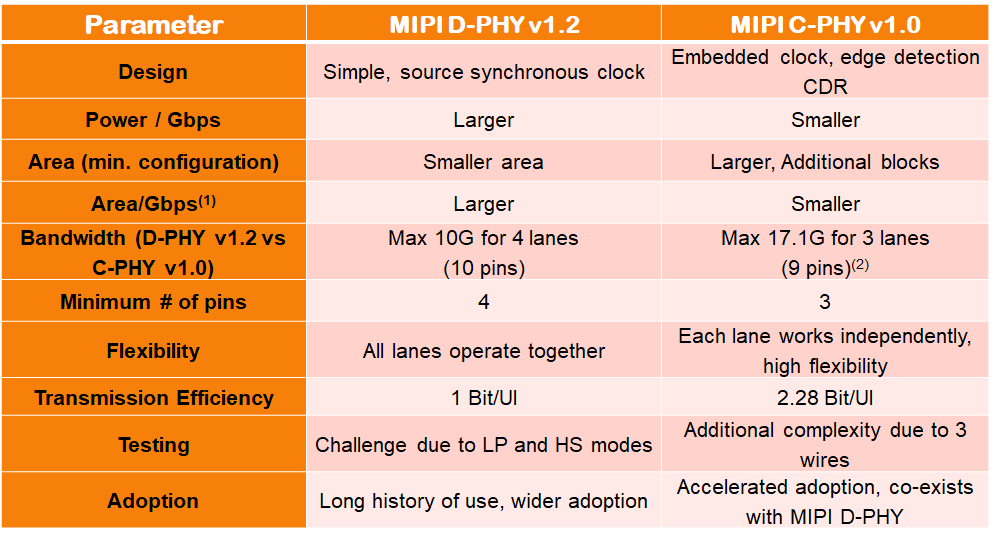What is Mixel?
Mixel is a mixed-signal IP company founded in 1998. Mixel’s mixed-signal portfolio includes PHYs and SerDes, such as MIPI® PHYs (MIPI D-PHY(SM), MIPI C-PHY(SM), and MIPI M-PHY®), LVDS, and Multi-standard SerDes cores (including MIPI C/D-PHY Combo and LVDS/D-PHY combo).
What is the MIPI Alliance?
The MIPI Alliance is a collaborative, non-profit organization serving companies that develop mobile and mobile-influenced devices. The organization develops hardware and software interface specifications that manufacturers can use to interconnect components within a device. Its members in the mobile industry are companies that develop smartphones and other devices such as tablets, laptops, and laptop-tablet hybrids. Its members in mobile-influenced industries are companies that use MIPI Alliance specifications to interconnect components in automobiles and to develop products that are part of the Internet of Things (IoT). (Courtesy of the MIPI Alliance, accessed 2020)
What is Mixel MIPI Central?
Mixel spearheads a MIPI ecosystem partnership including all representatives of all MIPI stakeholders, such as MIPI IP, both analog and digital, Verification IP (VIP), suppliers of measurement equipment, MIPI measurement service providers, and MIPI production test equipment manufacturers. Access Mixel MIPI Central here.
What is MIPI C-PHY?
MIPI C-PHY is a high-frequency, low-power, low cost, physical layer. The C-PHY configuration consists of up to three lane modules and is based on 3-Phase symbol encoding technology, delivering 2.28 bits per symbol over three-wire trios and targeting a maximum rate of 2.5 Gsps, 5.7Gbps.
What is MIPI D-PHY?
MIPI D-PHY is a high-frequency low-power, low cost, source-synchronous, physical layer. Although primarily used for connecting cameras and display devices to a core processor, the D-PHY can also be used for many other applications. It is used in a master-slave configuration, where high-speed signals have a low voltage swing, and low-power signals have large swing. High-speed functions are used for high-speed data traffic while low-power functions are mostly used for control.
What is MIPI M-PHY?
MIPI M-PHY is a high-frequency low-power, physical Layer IP that supports the MIPI Alliance Standard for M-PHY. The IP can be used as a physical layer for many applications, including interfaces for display, camera, audio, video, memory, power management and communication between Baseband to RFIC.
What is the difference between MIPI D-PHY vs MIPI C-PHY?
There are several fundamental differences between these two different protocols.
All things equal, MIPI D-PHY requires more power and area than MIPI C-PHY at higher data rates. C-PHY requires more area in the minimum configuration (1 trio vs. 1 data lane + 1 clock lane). See table below for a full comparison and this Mixel whitepaper for more information when comparing the two MIPI Specifications.
What is a MIPI C-PHY/D-PHY combo?
A MIPI C-PHY/D-PHY Combo is a high-frequency, low-power, low-cost, source-synchronous, physical Layer supporting the MIPI Alliance Specification for MIPI D-PHY and MIPI C-PHY. The PHY can be configured as a MIPI Master or MIPI Slave supporting camera interface CSI-2 and display interface DSI/DSI-2. The PHY supports mobile, IoT, virtual reality, and automotive applications.
The Mixel MIPI C/D-PHY Combo not only shares the serial interface pins, but Mixel’s implementation also reuses all the MIPI D-PHY functional blocks for the MIPI C-PHY, minimizing area and leakage power.
What is the MIPI D-PHY TX+/RX+ configuration? How is it different than a normal TX/RX configuration?
The MIPI D-PHY TX+ and MIPI D-PHY RX+ is a Mixel proprietary implementation of the MIPI Camera Serial Interface 2 (CSI-2) and Display Serial Interface (DSI) D-PHY Receiver. It is optimized to achieve full-speed production testing, in-system testing, and higher performance compared to traditional configurations while reducing area and standby power.

